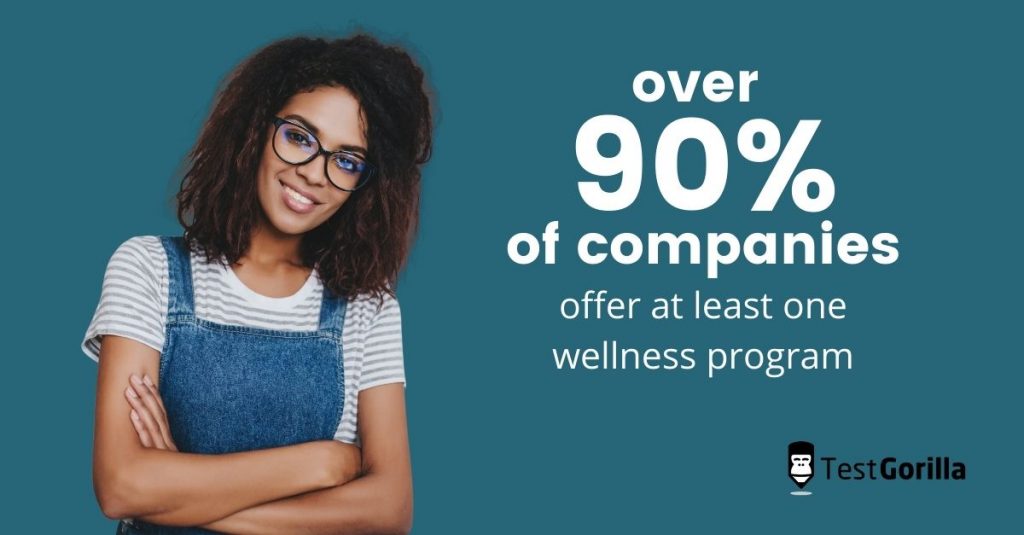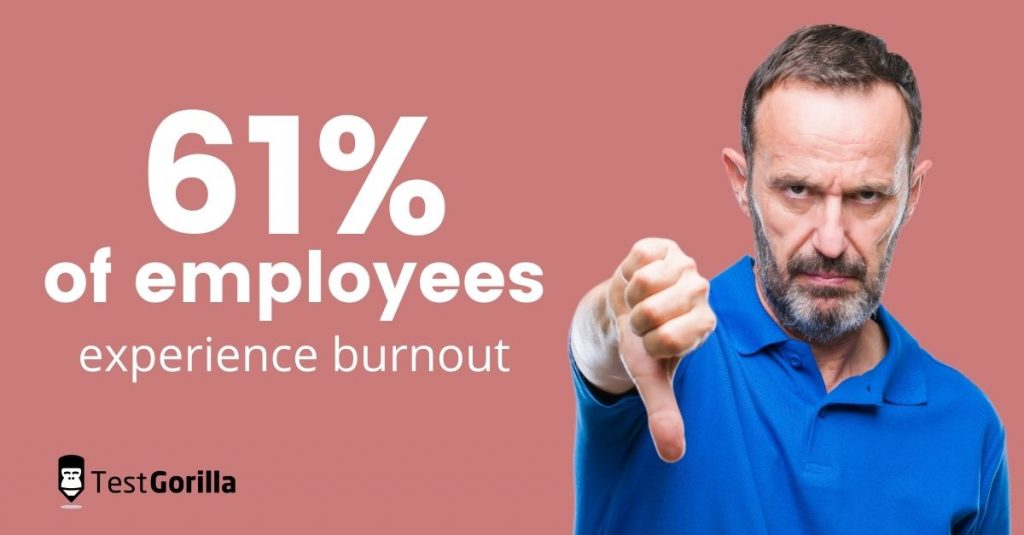As an employer, what do you want from your teams? As a starting point, perhaps you want them to be productive and engaged with their work. But have you considered the impact employee wellness has on your productivity and employee satisfaction? If not, these workplace wellness statistics might change that!
In recent years, there has been a significant increase in awareness around the importance of employee wellness, too. Employers are spending more resources implementing processes and safeguards to protect team members’ physical and mental health and ensure their happiness.
Are there still employers who treat people like robots and focus purely on numbers and outcomes? Sure, but they’re falling into the minority. Furthermore, platforms like Glassdoor make it easy to discover who these businesses are. The way employers treat their people frequently makes the news, too.
Here are ten must-know workplace wellness statistics that show the importance of keeping your employees healthy, happy, and engaged.
Table of contents
General Employee Wellness Statistics
Statistic 1: 87% of employees consider health and wellness offerings when looking for a new role
Although the focus given to employee wellness is growing, it isn’t a new thing. A 2013 Forbes report highlights the colossal proportion of job seekers who consider health and wellness when looking for a job.
Health and wellness offerings don’t even need to be a specific program. Shorter working hours, flexible working, or even free pizza on a Friday afternoon can contribute to overall wellness.
Statistic 2: Between 2016 and 2017, nearly 33% of companies increased the health and wellness benefits they offer
In 2017, the Society for Human Resource Management’s Employee Benefits study found that many companies are putting a greater focus on the health and wellness benefits they offer.
Were you one of these companies? If not, you may find it harder to attract top talent to your company. If your competitors offer these benefits, you better believe they’ll make them a significant feature of their job postings!
Employee Wellness Programs
Statistic 3: Interest in outcome-based wellness programs fell from 72% to 39% between 2017 and 2019
At face value, this finding from Shortlister’s 2019 Workplace Wellness Trends Report might seem alarming. However, it’s a sign that employers focus more on wellness overall rather than driving outcomes with incentives. It is also likely a result of employee feedback that they’d rather have access to things like mental health support.
For example, outcome-based programs see employees rewarded for hitting a specific goal, such as exercising for a particular length of time or eating certain foods. Doing those things can lead to better health, but there are better things to focus on from a workplace wellness perspective.
Statistic 4: More than 90% of companies offer at least one wellness initiative
Backing up the notion of businesses increasingly investing in wellness programs, the International Foundation of Employee Benefit Plans found over 90% of companies offer at least one wellness initiative. If you aren’t acting on these workplace wellness statistics, your company could be falling behind.
The most popular initiatives in 2017, according to Fidelity, were around helping employees to stop smoking, take more exercise, and manage their weight. However, the shift away from outcome-based wellness programs means mental health initiatives will have caught up since then.
Workplace Stress
Statistic 5: 61% of employees experience burn out on the job
Burned-out employees exhibit lower engagement levels, often leading to lower productivity, inadequate service delivery, and an underperforming business.
Alarmingly, a 2017 Career Builder study found 61% of employees reporting feeling burnt out on the job.
The same study found:
· 30% of workers stay connected with work, such as via email, during a vacation.
· The number of workers taking vacations is reducing.
· Employees only take, on average, 80% of their vacation entitlement per year.
What can your business put in place to ensure your employees take their vacations and aren’t experiencing burnout at work?
Statistic 6: 48% of employees say employer training helps them manage stress
Work can bring pressure and stress. That’s a fact, and it’s unlikely ever to change.
However, as an employer, you can have systems in place to help employees manage this.
Data shows such an approach can bring benefits, too. Udemy’s Overcoming Workplace Stress Study shows that nearly half of employees say an employer training program helps them manage stress.
Employees can take advantage of this benefit in their personal lives, too!
How Employees Benefit from Wellness Programs
Statistic 7: 61% of employees say an employer wellness program helped them make healthier lifestyle choices
Continuing the trend of workplace wellness programs delivering positive outcomes beyond the workplace, 61% of employees told Aflac a wellness program helped them make healthier lifestyle choices.
And healthier lifestyle choices lead to higher levels of happiness and better physical and mental health. From an employer perspective: improved engagement, increased productivity, and fewer sick days.
Statistic 8: 70% of employees with access to a wellness program report higher levels of job satisfaction
On top of the health benefits, a separate Aflac report found your employees will enjoy their jobs more, too!
Employees who enjoy their jobs will be better at their jobs. You’ll also reduce your labor turnover and the stress on your recruitment teams, too!
How Employers Benefit from Wellness Programs
Statistic 9: Disengaged employees cost U.S. businesses up to $550 billion a year
The biggest problem with disengagement is that it’s hard to know exactly what it costs.
An Engagement Institute study put the scale of the problem, in monetary terms, at potentially $550 billion per year across all U.S. businesses. A wellness program can help prevent engagement-related loss while delivering gains to your bottom line instead.
A double win!
Statistic 10: 63% of companies offering wellness programs report improved financial sustainability and increased growth
Just a quarter of businesses admit the main reason they want a wellness program is to deliver increased productivity and growth. However, a far more significant percentage achieve such an outcome.
Whether you place this outcome at the heart of your wellness program or as an incremental benefit,
What Impact Could a Workplace Wellness Program Have on Your Business?
When you invest in an employee wellness program, everyone wins!
Your employees:
Can take their full vacation entitlement and disconnect from work while they’re away.
Can learn how to manage stress better.
Make healthier lifestyle choices.
Are happier at work and stay with you for longer.
Your business:
Builds a reputation as an employer with a focus on employee wellness.
Has a team of motivated and engaged people working for you.
Enjoys improvements in productivity, revenue, profitability, and growth.
If these workplace wellness statistics have motivated you to make some changes at your company, remember: improving wellness doesn’t have to be hard. You don’t even need a full blown employee wellness program to help you achieve these outcomes.
Depending on your business’s size, even having a particular member of your human resources team responsible for organizing and delivering wellness benefits can make a significant difference to you and your teams.
Related posts
Hire the best candidates with TestGorilla
Create pre-employment assessments in minutes to screen candidates, save time, and hire the best talent.
Latest posts
The best advice in pre-employment testing, in your inbox.
No spam. Unsubscribe at any time.

Hire the best. No bias. No stress.
Our screening tests identify the best candidates and make your hiring decisions faster, easier, and bias-free.
Free resources
This checklist covers key features you should look for when choosing a skills testing platform
This resource will help you develop an onboarding checklist for new hires.
How to assess your candidates' attention to detail.
Learn how to get human resources certified through HRCI or SHRM.
Learn how you can improve the level of talent at your company.
Learn how CapitalT reduced hiring bias with online skills assessments.
Learn how to make the resume process more efficient and more effective.
Improve your hiring strategy with these 7 critical recruitment metrics.
Learn how Sukhi decreased time spent reviewing resumes by 83%!
Hire more efficiently with these hacks that 99% of recruiters aren't using.
Make a business case for diversity and inclusion initiatives with this data.






















